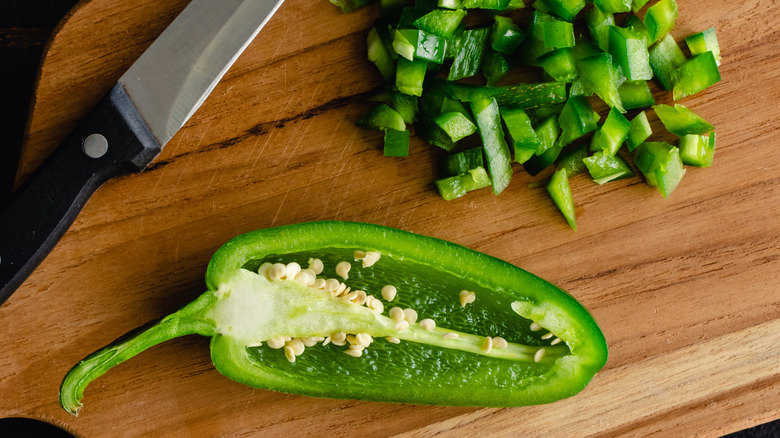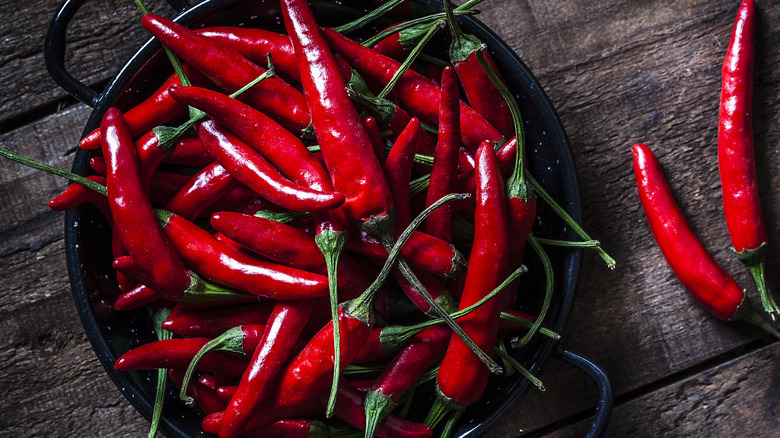Why Removing Chili Pepper Seeds Won't Temper Most Of The Heat
It's easy to love the vibrant flavors that chili peppers bring to a dish, but it can be hard to handle the heat. Some may shun peppers altogether to avoid unintentionally setting their mouth on fire, while others attempt to use peppers in cooking without overdoing the heat level. It's a long-held belief by many cooks that simply removing the seeds from a pepper will reduce the heat and make it more palatable.
But what actually gives chili peppers their firey qualities is a naturally occurring chemical called capsaicin. While it can be found in other parts of a pepper, capsaicin is mostly concentrated in the placenta — the white, firm, fleshy part directly beneath the stem, and the pith and ribs that line the inner side of the chili. If you want to avoid as much heat as possible when cooking recipes with chili peppers, simply removing the seeds will not get rid of the highest concentrations of heat. Instead, it's that white membrane loaded with capsaicin that you want to make sure doesn't end up in your dish.
Cook carefully with hot chilis
If you want to cook with hot chili peppers, there are ways to both control the capsaicin heat in your dish and keep the burning sensations at bay. First, use gloves when chopping and preparing hot peppers, wash your hands thoroughly after you're done, and avoid touching your face and eyes. Then, to remove as much heat from the pepper as possible, take out the entire white placenta and the seeds that are under the base of the stem. You'll also want to cut out the white ribs that extend down the inner length of the pepper — that's where all the capsaicin glands are.
If you're curious how different peppers compare in heat levels, refer to the Scoville scale, measured in Scoville Heat Units, or SHUs. The level is based on the typical amount of capsaicin in each variety. The higher the number, the hotter the heat: The Carolina Reaper sits at the top, with up to 2.2 million SHU, whereas a mild bell pepper is between 0 and 2000 SHU.
It might seem that cooking and eating something that can cause pain and irritation to our mouths would be unhealthy, but the opposite is actually true. Capsaicin is thought to be good for the metabolism and, oddly enough, has anti-inflammatory properties. However, if you like the flavor but struggle with the heat, start with milder varieties and smaller amounts and work your way up to build a higher tolerance to chili peppers.

